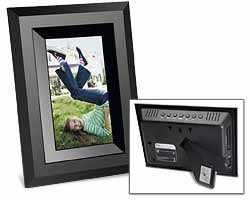Whistler’s Mommy Invites Grandchild Moses and Raggedy Andy Warhol For A Playdate
Do you sometimes feel like you’re the curator of the MMOTA (Modern Museum of Toddler Art) or the AMOKAC (American Museum of Kindergarten Arts and Crafts)?
Do you feel obligated to believe a picture is worth a thousand words because you can’t understand half of what your toddler says?
 Have you forgotten what color your refrigerator is because the doors, like museum walls, are covered with all of the major artistic methods–watercolor, oil(y Play-doh), and mixed media (painted, sparkly macaroni)?
Have you forgotten what color your refrigerator is because the doors, like museum walls, are covered with all of the major artistic methods–watercolor, oil(y Play-doh), and mixed media (painted, sparkly macaroni)?
Today, we start the second year of the Paper Doll blog, so it seems appropriate, given this auspicious time, to talk about children’s art as our own little cooperative masterpiece of a blog enters its toddler years.
When children are very young, every artistic endeavor may seem like a masterpiece, but soon enough, parents can become overwhelmed by the embarrassment of finger-painted riches. At some point, you realize you’re either going to have to start buying Frigidaires in bulk, or you’re going to run out of display space in this kiddie art gallery you used to call your home.
Unlike the other categories of paper we’ve discussed in the past: bills, to-do lists, references papers, Social Security cards…there’s no agreed-upon records retention schedule available for determining how long one should keep art created by tiny hands. So, today, we’re going to explore some ways of looking at two aspects of handling children’s art: displaying the work and winnowing the collections.
First, before you run to Fridges-Are-Us for your next art wall, recognize that there are alternatives to hanging art where your lunch lives.
THE CLASSICS
Hang a clothesline a few inches below ceiling height (too high for children to climb to reach) and hang paper artwork, attaching it with clothespins. This can be a fun way to decorate your child’s room as well as any other bare but casual area, like a guest room, mud/utility room, playroom or basement. You can make it a permanent display gallery with rotating collections, or you can put on an ad hoc art show.
Invest in a large cork board and affix it to a bare wall. You can display the art as-is, right on the cork, or cover the entire board with dollar-store wrapping paper or white or brown kraft paper. In the latter case, your kids can draw on or decorate the kraft paper (also called butcher paper), first, creating a meta-message of art-on-art.
Wallpaper an unfinished basement. The walls of a basement laundry room are likely to be gunmetal grey and depressing. Charming and colorful children’s art can brighten the area (and the mood of laundry day) immensely. The works can be easily and safely attached to walls with removable Command Picture Hanging Strips.
Frame it or Contain it. Whether you’re a do-it-your-self framer, prefer a fun kid-themed frame or desire opportunities for frequent changes of display as afforded by this  L’il Davinci art cabinet, no rogue art or craft will ever complain that it was framed.
L’il Davinci art cabinet, no rogue art or craft will ever complain that it was framed.
Embroider it! This may not be a classical type of display, but this FeelingStitchy blogger’s crafty talents are put to excellent use in framing and displaying her grandchildren’s art.
MODERN ART
“Take a picture; it’ll last longer.” OK, that saying still sounds a little snarky, but it’s a perfect option for preserving mixed-media and other three-dimensional works of art. Better yet, take a snapshot of your child  holding the masterpiece to keep a historical record your little star during his or her Blue Period.
holding the masterpiece to keep a historical record your little star during his or her Blue Period.
Scan the artwork using standard scanning software; for larger pieces, you will have more luck with a full-sized scanner than the popular handhelds. Suppress acting on your temptation to color-correct green hair or fix the spelling mistakes that actually make children’s art delightful.
Create greeting cards and calendars  you can share with family and friends. You can make the calendars yourself by laminating pages and having them spiral-bound at Kinko’s or your local printing shop; they can print your cards, too. Or, you can have your favorite online or offline photo developing company mass-produce calendars or cards in bulk.
you can share with family and friends. You can make the calendars yourself by laminating pages and having them spiral-bound at Kinko’s or your local printing shop; they can print your cards, too. Or, you can have your favorite online or offline photo developing company mass-produce calendars or cards in bulk.
Upload the scanned art to flickr or other photo-sharing social networking web sites.
Create a web site using a free blog template and upload the art for all the world to see. Send the link to grandparents, family, friends and chat about it on Facebook or Twitter. Let your little Michelangelo or Georgia O’Keeffe develop a world-wide following. (Of course, make sure to use safety protocols and don’t identify your child’s name or location on public sites.)
Use Digital Picture Frames If grandparents or great-grandparents haven’t quite joined the digital age and don’t use computers, it’s OK. You can load a series of photos of the art (as well as snapshots of the whole family) onto a memory card and plug it into a digital picture frame for them. Of course, it can’t hurt to send along an occasional piece of paper artwork along with a letter that says “Dear Grandma and Grandpa” or “Dear Bubbe and Zayde”, or “Dear Baba and Gigi”, or “Dear Abuela and Abuelo”…
If grandparents or great-grandparents haven’t quite joined the digital age and don’t use computers, it’s OK. You can load a series of photos of the art (as well as snapshots of the whole family) onto a memory card and plug it into a digital picture frame for them. Of course, it can’t hurt to send along an occasional piece of paper artwork along with a letter that says “Dear Grandma and Grandpa” or “Dear Bubbe and Zayde”, or “Dear Baba and Gigi”, or “Dear Abuela and Abuelo”…
AVANT GARDE
Every parent believes his or her child’s art is a tour de force. The parents of these little girls took it the next step, and put their daughters’ art on display at the Peez Leweez coffee house  in Livingston Manor, NY (about halfway between Binghamton and New York City) along with the creations of other local artists. Sales of the works brought in legal tender (which was donated to charity). If you or someone you know owns a bookshop, coffee house or other venue with walls suitable for gallery displays, this could be the bees knees for entrepreneurial types and parents of prolific artistes.
in Livingston Manor, NY (about halfway between Binghamton and New York City) along with the creations of other local artists. Sales of the works brought in legal tender (which was donated to charity). If you or someone you know owns a bookshop, coffee house or other venue with walls suitable for gallery displays, this could be the bees knees for entrepreneurial types and parents of prolific artistes.
CURATING YOUR COLLECTIONS
Eventually, the issue of art displays will become secondary to the need to conquer piles of paper art. It can become overwhelming, especially in small houses or large families. It’s necessary to pare down your artistic collections. Here’s one process that might work for your family:
Whatever gets created that week is put on display…no exceptions. It doesn’t have to be pretty: Beauty is in the eye of the beholder, and if your second-grader beholds you as a 300 pound giant with three arms all on one side of your body, whose to say she’s not the next Picasso? It’s the Exhibit of the Week!
At the end of the week, take everything down to make room for next week’s work. Ask your child if he or she would like to find one piece to mail to loved ones in paper form. Do not, however, send everything to the grandparents or they’ll end up with clutter!
Next, weed out any the pre-drawn, pre-cut designs from coloring books. Let go of the art that doesn’t really represent your kids’ true abilities–I’m sure the mommy of guy who draws Pilgrims for holiday-themed coloring books is already proud of him, so you don’t have to honor his work. This like an art appraiser, and concentrate on your artist’s originals and not the mass reproduced knock-offs.
Collect what’s left in a flat, clean box. You can buy art storage boxes at The Container Store, but it might be easier to ask your local pizzeria to throw in an extra (unused) large pizza box or two the next time you have a big pizza party. Then, set the art aside to “marinate” (as my colleague Allison Carter says) for a month or more. Once the contents of the box has been out of sight for a while, your kids‘ attachment to the art as well as yours will have diminished, and you’ll be able to select no more than a half dozen to a dozen pieces representative any year of artistic expression.
With this winnowed but elite collection, you can preserve art in paper form in the pizza boxes, or in more formal scrapbooks or albums. Or, you can use long, cylindrical cardboard tubes (e.g., wrapping-paper tubes, mailing canisters or architect’s design tubes). Obviously, however, you may afford to be much less parsimonious with your gallery’s collections if you plan to transfer the art to digital form. Just remember to group the preserved paper collections with other memorabilia and away from the cold and damp prevalent in basements, or the excessive heat or humidity of attics, garages or crawlspaces.
Parents, enjoy your children’s art, and enjoy their creative processes, without living amid layers of flaking paint and piles of crumbling construction paper. Revel in your role as Curator of the Museum of Little Folks’ Art.




Follow Me